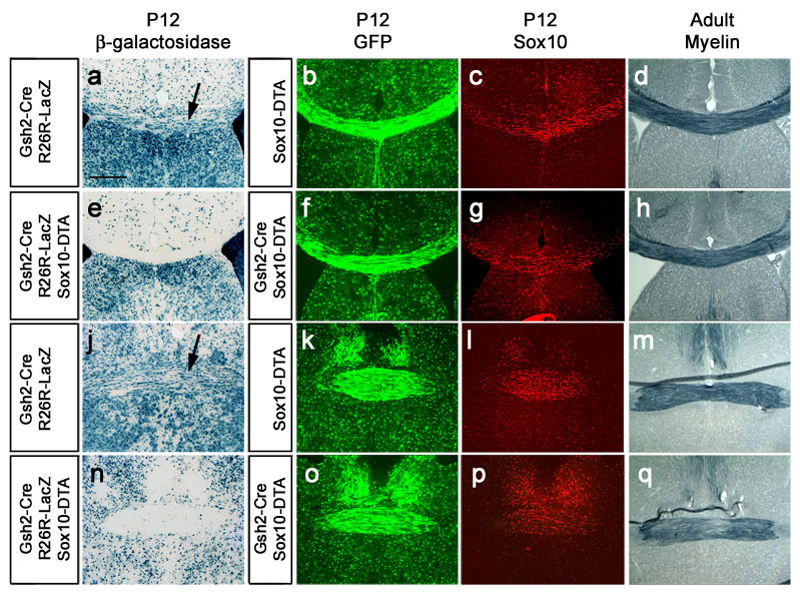Figure 4.
Genetic ablation of region-specific OL populations reveals functional redundancy and compensation among the different lineages. (a-d) Gsh2-derived white matter glia (mainly OL lineage cells) were visualized in the corpus callosum (a-b) or anterior commissure (c-d) of P12 Gsh2-Cre/Rosa26R-lacZ (a,c) and Gsh2-Cre/ Sox10-DTA/ Rosa26-R-lacZ (b,d) mice (coronal sections, arrows). Many blue cells are visible in these tracts in Gsh2-Cre/Rosa26R-lacZ mice but are missing from the equivalent structures of Gsh2-Cre/ Sox10-DTA/ Rosa26-R-lacZ mice, showing that Gsh2-derived OLs have been effectively ablated in the latter through the action of DTA. (e-l) Despite the specific loss of Gsh2-derived OLs, there is no apparent reduction in the total complement of OLs in these white matter tracts as visualized by GFP staining (compare e with f, g with h) or Sox10 staining (compare i with j and k with l). (m-p) There is no apparent reduction in the amount of myelin in adult white matter tracts of ablated Gsh2-Cre/ Sox10-DTA mice as visualized by Sudan black histochemistry (compare m with n, o with p). Thus it appears that the loss of Gsh2-derived OLs is compensated for by the invasion of alternative OL lineages. Similar compensation was observed when the Emx1-derived OL lineage was ablated in Emx1-Cre/ Sox10-DTA mice (data available on request). The mice resulting from these crosses survived, behaved and reproduced normally until at least P60. These experiments demonstrate that the different regional OL lineages compete for territory in the normal developing CNS and further suggest that the different OL populations are functionally equivalent. Scale bar: 400 μm.

